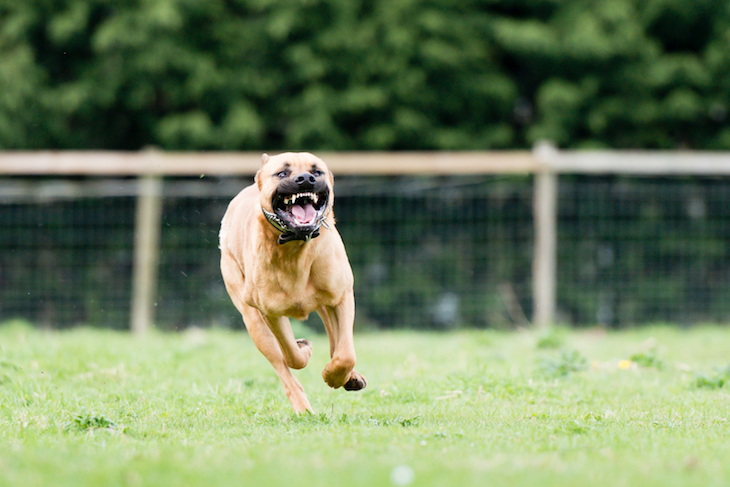When I was a child in the 1950s it was unheard of for someone to be killed by a dog. Dogs were rarely killed by other dogs. By the early 1990s, things were different. Dog-fighting made a comeback and the fad was for the ‘weapon’ dog, promoted via American gangsta rap. Staffordshire bull terriers were being bred in large numbers again and other fighting breeds, previously unheard of here, were brought into this country. In 1991, concerned about attacks, the government passed the Dangerous Dogs Act (DDA), which banned the American pit bull terrier as well as the lesser-known dogo Argentino, fila Brasileiro and Japanese tosa, all of fighting origins.
The DDA, however, proved unpopular and dog attacks have continued, which is why, in May, the Environment, Food and Rural Affairs (Efra) select committee launched the inquiry into Breed Specific Legislation, which is looking at whether the ban should be scrapped altogether or replaced by some other form of regulation.
It comes down to the old nature vs nurture argument, in this case whether genetics plays a part in a dog’s behaviour. If you believe that some breeds are potentially too dangerous to be kept as pets, you will side with the police and Department for Environment, Food and Rural Affairs, who want some form of regulation to remain in place.
But if you believe in ‘blaming the deed, not the breed’, you will side with most of the dog world. The Kennel Club, the RSPCA and the other dog charities, dog magazines, many vets and dog behaviourists have campaigned for years to get the ban overturned and want every dog to be treated as an individual.
These kindly ‘blame the deed’ people say it is unfair to discriminate against a type of dog, and that any breed can be dangerous if you treat it badly. In their view, what is important is training and being a good owner; genetics count for little. They overlook the fact that selective breeding has, over the centuries, produced dogs for certain tasks: the border collie to herd, the pointer to point, the rottweiler to guard and the pit bull to fight. If you treat a dog kindly, they maintain, it will be a nice dog. Small dogs bite more than pit bulls, and ‘large’ dogs can also be dangerous.
Yet it’s not setters or retrievers that are killing and mauling. Several of the dogs that have killed people in the UK are not on the banned list but are, apart from a few exceptions, nearly always what are described as ‘pit bull-type dogs’, which means they are closely related to pit bulls. This includes the Staffordshires (English and American), the American bulldog, and their crosses, which can be equally dangerous. The present ban should have included these dogs, and it hasn’t helped that illegal pit bulls, and pit bull crosses, have been passed off as staffies. The smaller pedigree English staffie does not pose as great a threat as an American pit bull terrier, though they can be aggressive.
Dachshunds and chihuahuas do bite more. But it’s absurd to conflate the ‘bites’ of ordinary dogs with the life-threatening attacks and maulings of fighting-bred dogs. Pit bull-type dogs are descended from the bull- and bear-baiting dogs of England centuries ago. These muscular, athletic dogs were selectively bred for fighting — to grab, hold and shake their victim until it was dead. If they do attack, the consequence is death or a serious mauling. Their jaws do not actually ‘lock’, as some believe, but because of their inbred ‘gameness’, which makes them want to fight to the death, they do not let go. Often, in the US, whether someone survives an attack depends on whether anyone nearby has a gun.
Pit bulls can be calm and affectionate. But they can suddenly attack before reverting to their usual behaviour. In the US in April 2013, two-year-old Beau Rutledge was killed by Kissy Face, the family’s much-loved pit bull they’d acquired as a puppy eight years before. Kissy Face had never shown any aggression until then. Shortly before being put down she was given a temperament test, which she passed.
In May, pit bulls in the US killed five people. Two of them, a young boy and a baby, died in the space of less than a week. On 25 May, six-year-old Gauge Eckenrode was killed by the family pit bull, which had to be stabbed ‘multiple’ times before it would let go of the little boy, and only days later, eight-month-old Liana Valino was killed by another ‘family’ pit bull.
Similar horrors happen here, such as the death of 52-year-old David Ellam after being attacked by a pit bull-type dog on a Huddersfield street in 2016. The pit bull tried to attack Mr Ellam’s yorkie and in his struggle to protect his little dog it turned on him, tearing off his kneecap before going for his throat. Passers-by were too terrified to intervene and it wasn’t until the police arrived with a fire extinguisher that the dog released its jaws.
The inquiry should take note of what the ‘real’ pit bull people say: those who love these dogs but recognise their deadly potential. The Pit Bull Federation of South Africa, where there have been a number of fatalities and maulings, argues that most people are not capable of owning a pit bull, adding that you cannot ‘remove a dog’s genetics’.
Pit Bull Rescue Central, in the US, advises owners and handlers to carry a ‘break stick’ — a wedge-shaped piece of wood — so they can prise open the dog’s jaws in case it latches on to some person or animal. Advocates for pit bulls love to point out that the breed is naturally good with children and has been considered a ‘nanny dog’. But Bad Rap, an American pit bull organisation, has pointed out that ‘there never was such a thing’ and the term is a ‘recent invention’.
Doctors and plastic surgeons in the US are speaking out, appalled at the injuries caused by pit bulls. In 1982, Merritt Clifton, now editor of Animals 24-7, started logging reported dog attacks by breed. His figures show that from then until 2017 pit bulls killed 389 people and maimed 3,648, while labradors killed six and maimed 57. Organisations such as DogsBite.org, National Pit Bull Victim Awareness and Daxton’s Friends have since sprung up to highlight the problem, support victims and counter the pro-pit bull propaganda.
We humans created pit bulls through selective breeding. It’s not their fault they attack, but people and other animals must be kept safe. If the ban is removed and not replaced by any regulation, there will be more deaths and injuries in the UK.
Got something to add? Join the discussion and comment below.
Get 10 issues for just $10
Subscribe to The Spectator Australia today for the next 10 magazine issues, plus full online access, for just $10.
You might disagree with half of it, but you’ll enjoy reading all of it. Try your first month for free, then just $2 a week for the remainder of your first year.














Comments
Don't miss out
Join the conversation with other Spectator Australia readers. Subscribe to leave a comment.
SUBSCRIBEAlready a subscriber? Log in